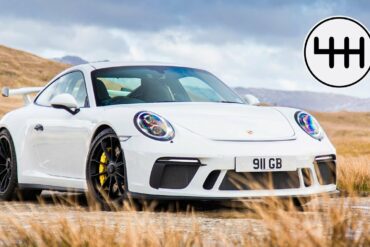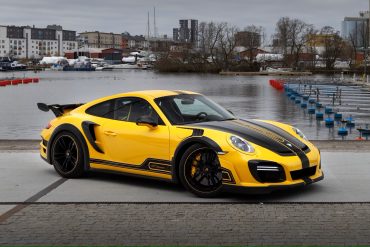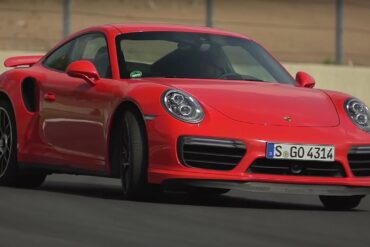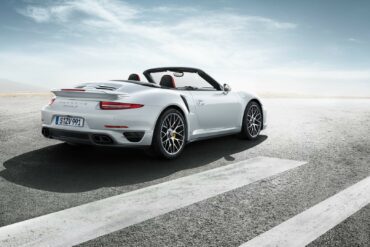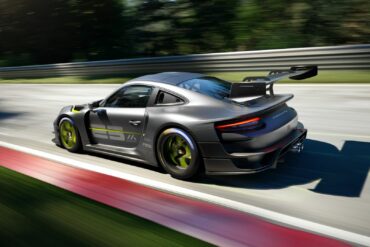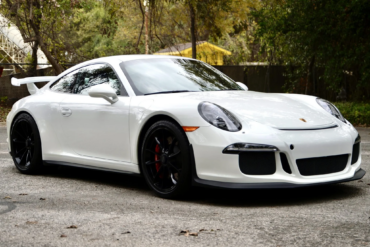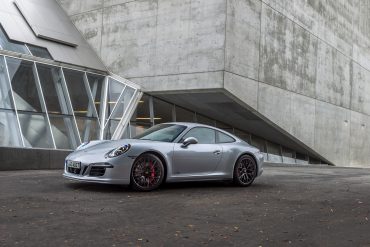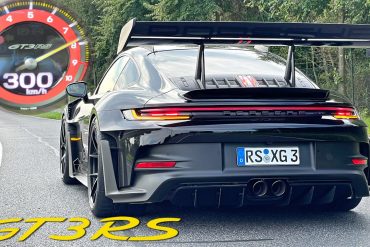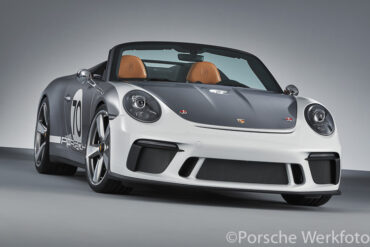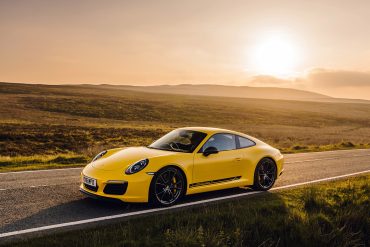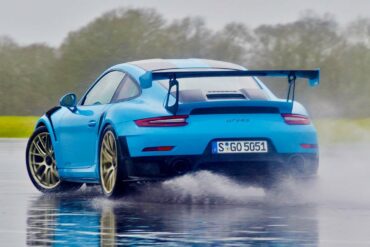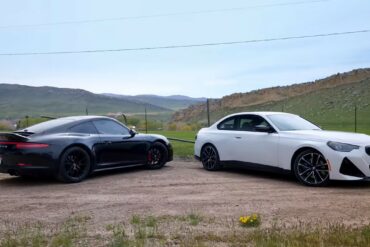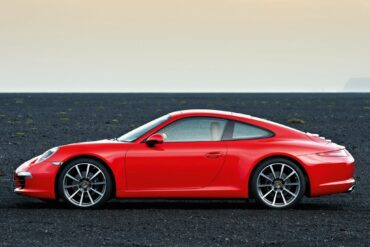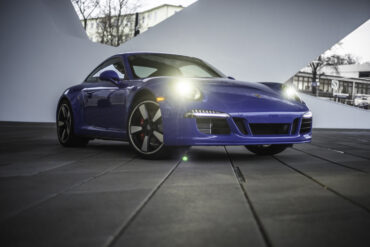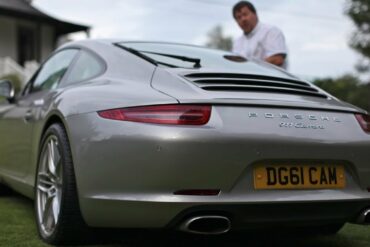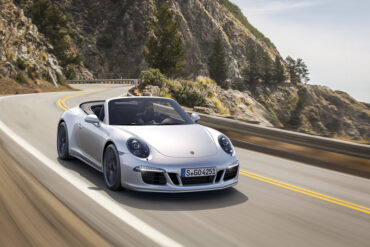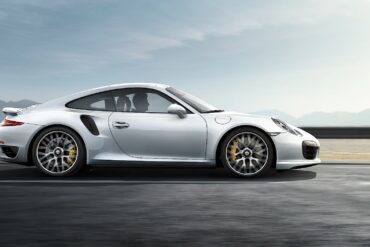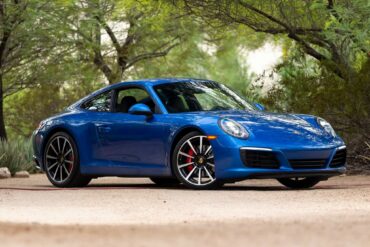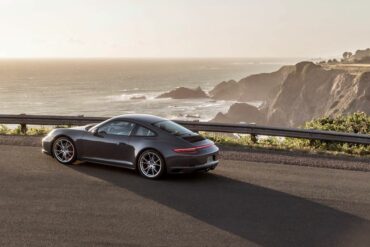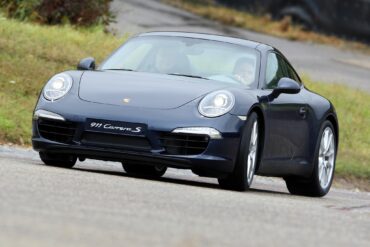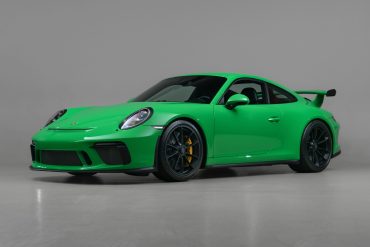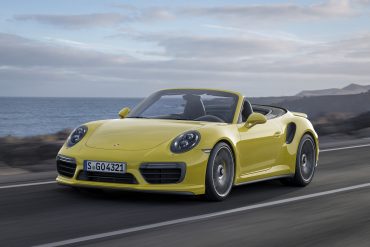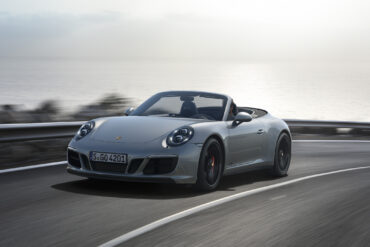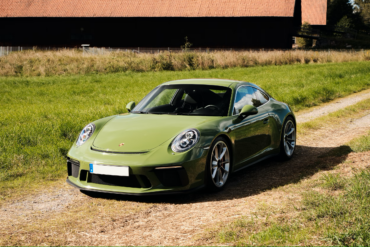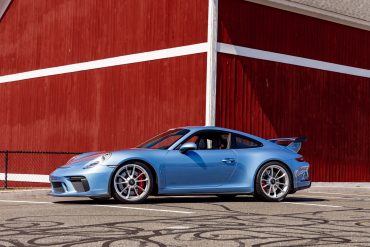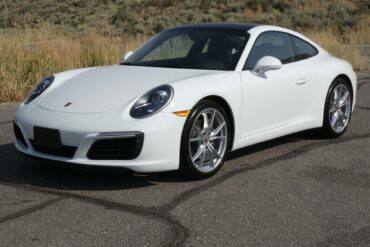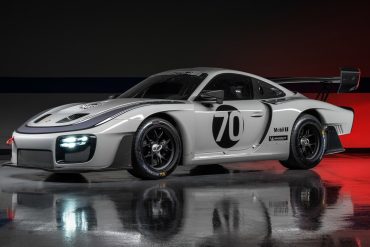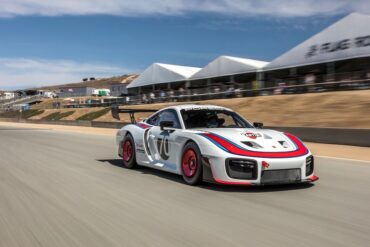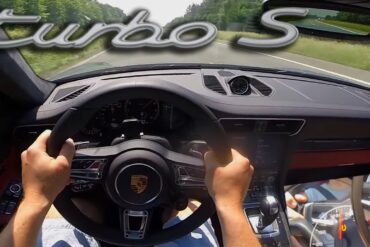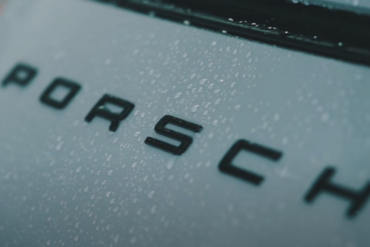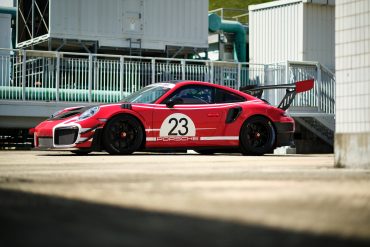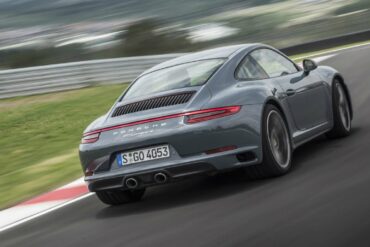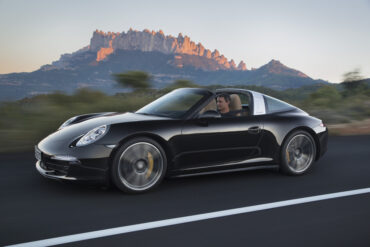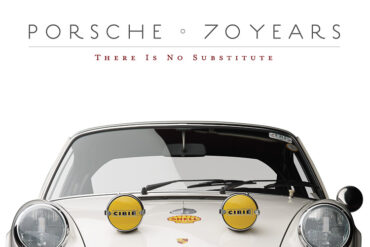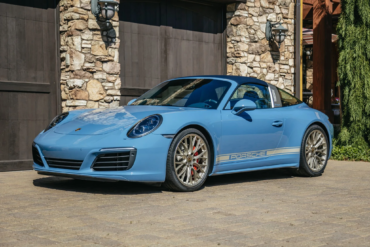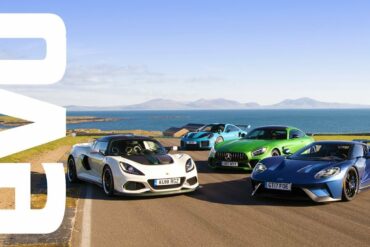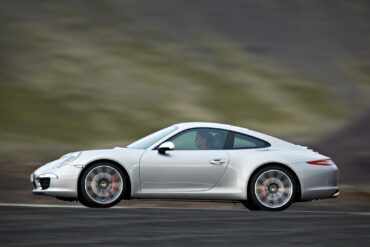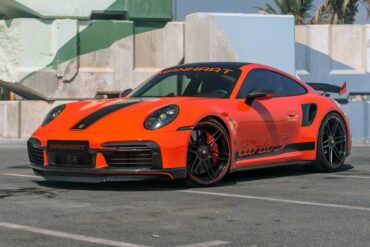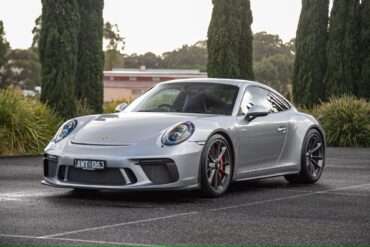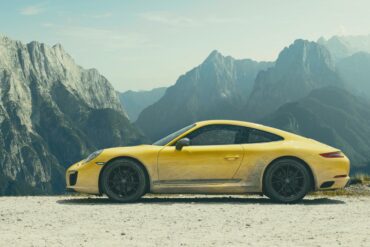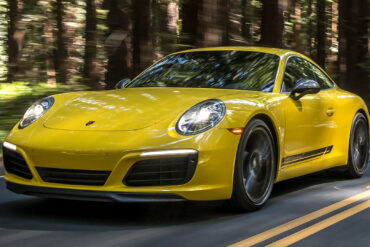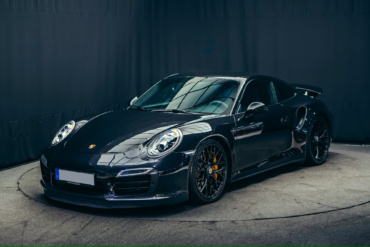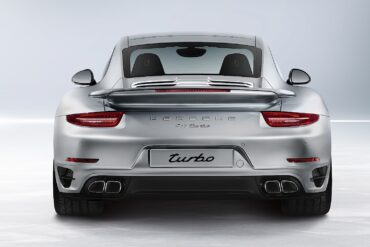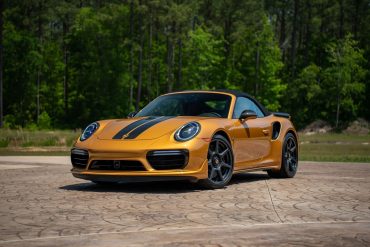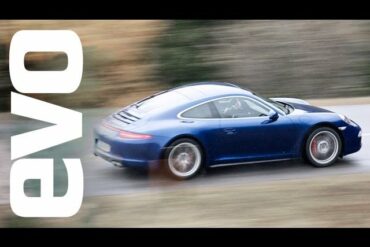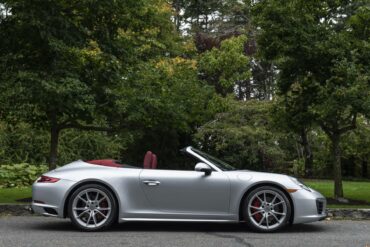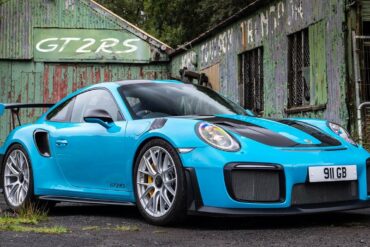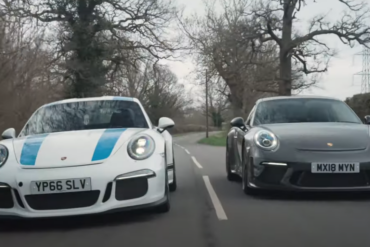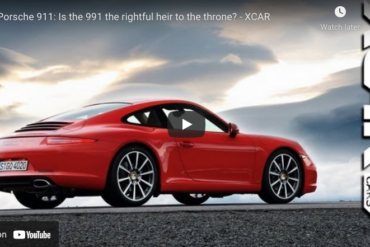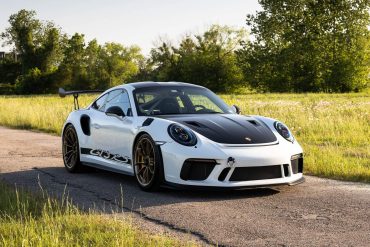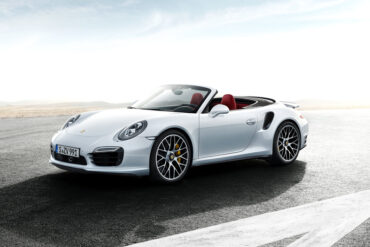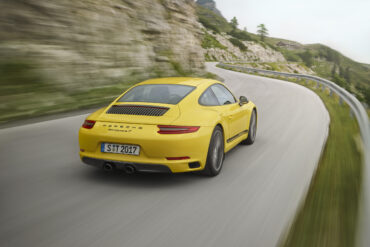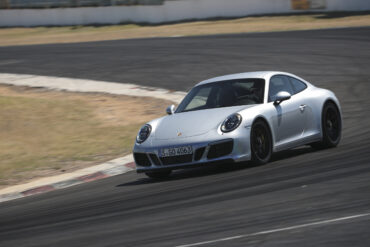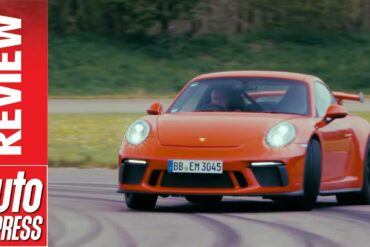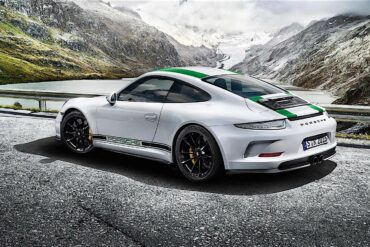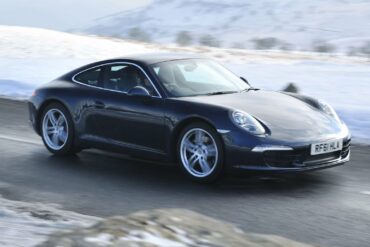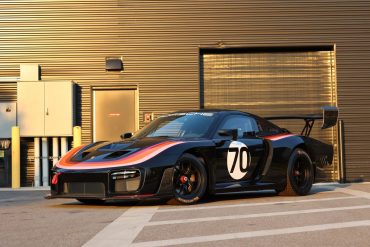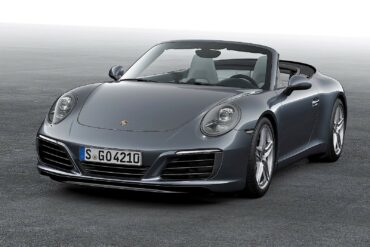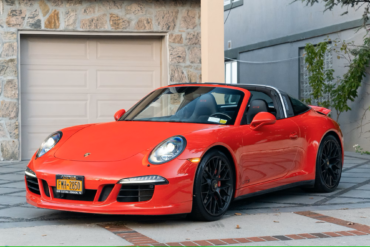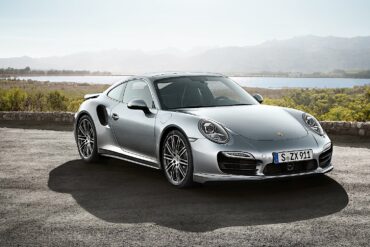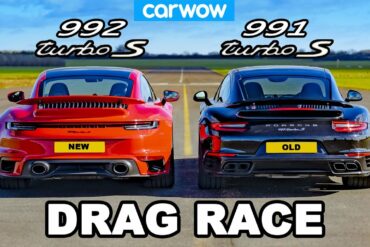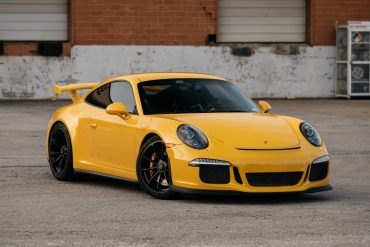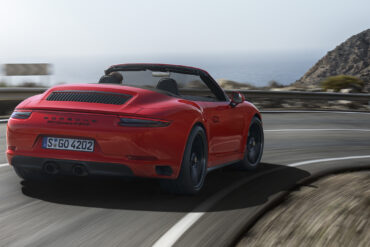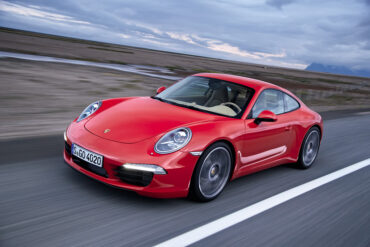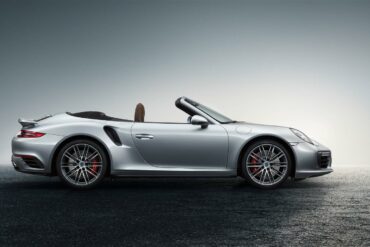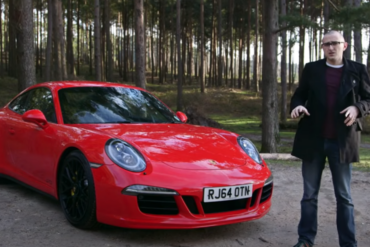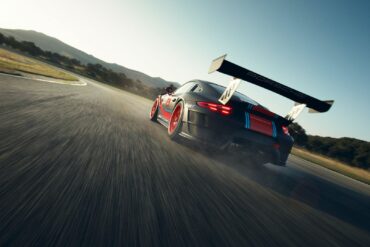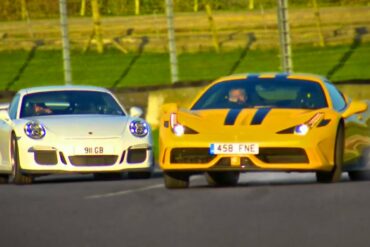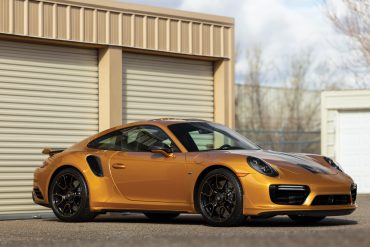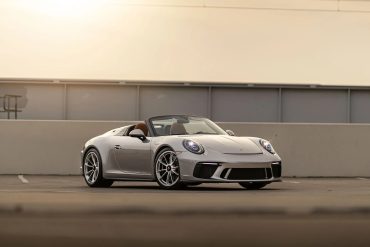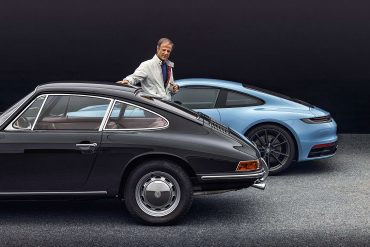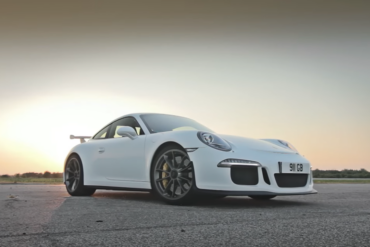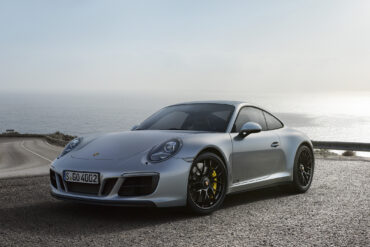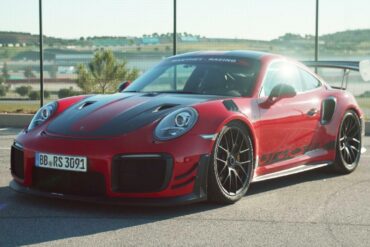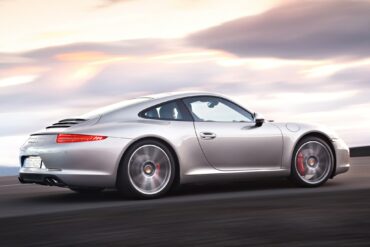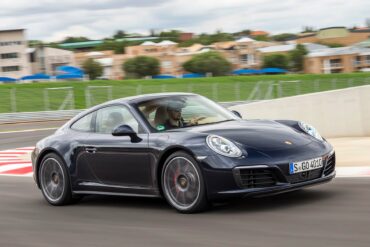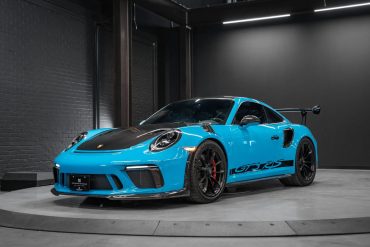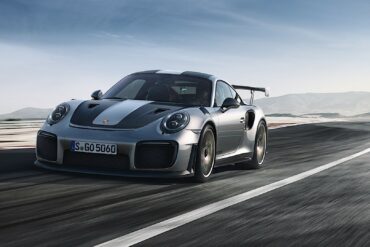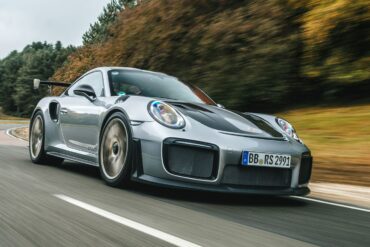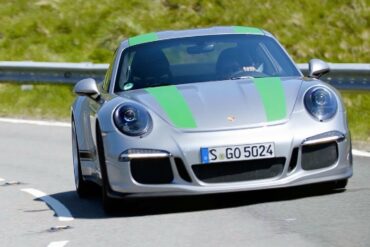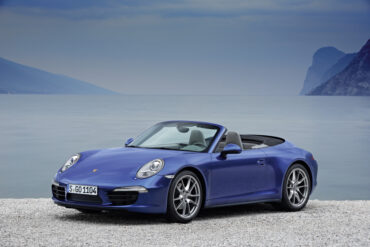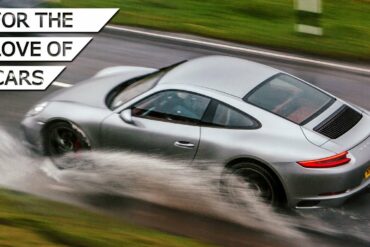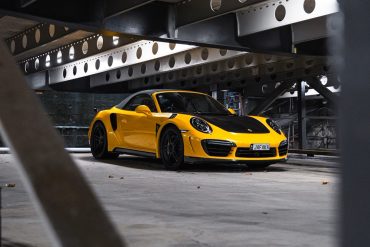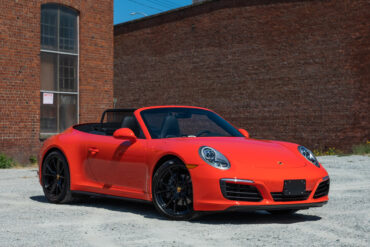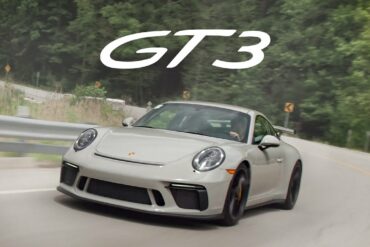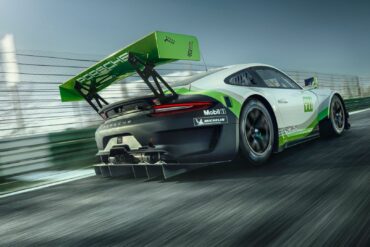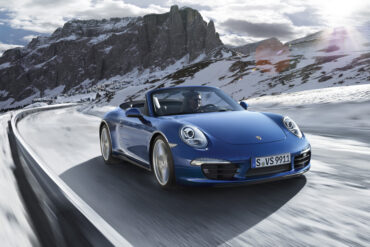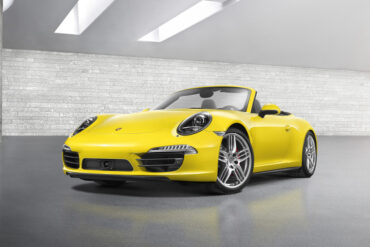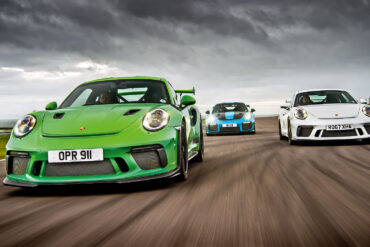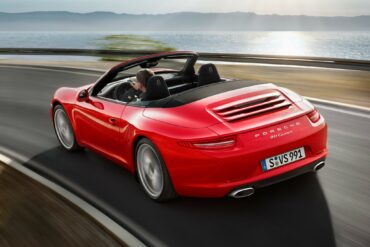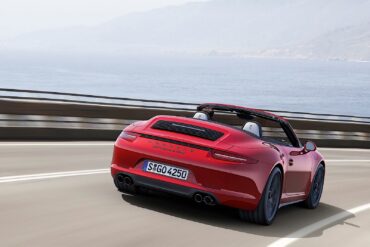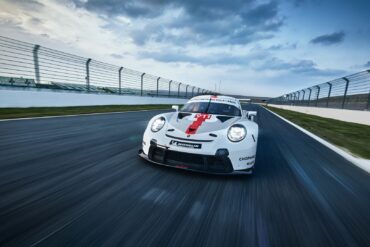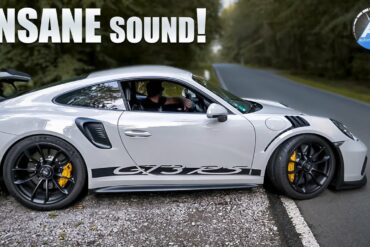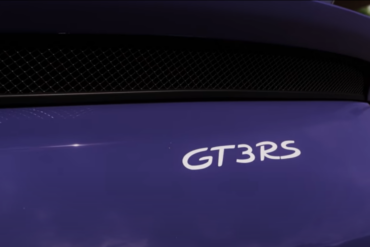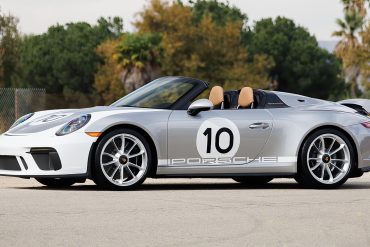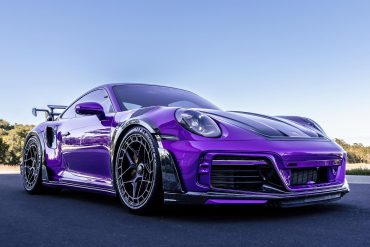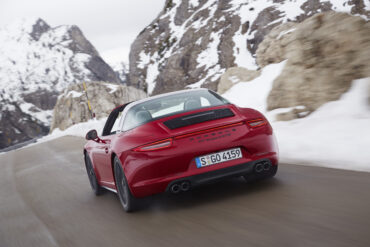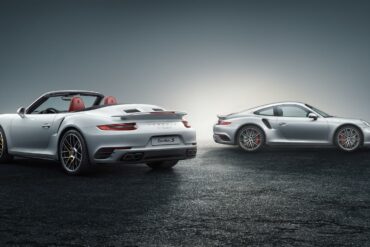Carfection Makes The Case for the Manual Henry Catchpole demonstrates why the manual is something to be treasured in a...
Porsche 911 (991)
The Type 991 911 series was the seventh generation of the iconic 911. The 991 generation models were unmistakably 911 in looks and design philosophy, but the 991 was really the ultimate evolution of Porsche 911s becoming highly technical, high quality and well built machines. Quality improved and the technology jump finally vaulted Porsche to the top of the automakers in terms of building the best cars on the planet. The Type 991 represented the most technically advanced 911 model to date and the 991 looked more powerful than any other 911 before – an effect that was heightened by the wider track and a stretched wheelbase. It also featured adaptive aerodynamics: the 911 was the first series sports car from Porsche to adopt this technology from the 918 Spyder hybrid super sports car. The 991.1 generation cars launched as MY 2012 cars. The 345hp 3.4 liter Carrera and 400hp 3.8 liter Carrera S launched first, in both Coupe and Cabriolet bodystyles and could be had with either rear and all-wheel drive drivetrains. The 991s all got electric power steering which took away some of the feel we were used to. The Carrera S got PASM standard (optional on the Carrera). The new Turbo (in coupe and cabriolet) came out in 2013, now with a whopping 512hp. See all of our Porsche 991 Research.
TechArt has fully upgraded this 991.2-generation Porsche 911 Turbo S to GTStreet R specification. The rear engine lid houses a...
Porsche 911 Turbo S | Chris Harris Drives | Top Gear The Porsche 911 Turbo S has always been a...
2014 Porsche 911 Turbo S Cabriolet (991) Technical Specifications Engine layout Rear Engine Engine type Twin Turbo Boxer w/ VTG Cylinders...
2021 Porsche 911 GT2 RS Clubsport 25 (991.2) Technical Specifications What drives us? The next victory. Even after 25 years,...
In the 50th anniversary year of the 911, Porsche opened a new chapter in race track performance sports cars. The...
2016 Porsche 911 Carrera 4 GTS (991) Technical Specifications Engine layout Rear Engine Engine type Boxer-6 Cylinders 6 Valves per...
Although the 911 GT3 RS wasn’t engineered for top speed, it demonstrates impressive straight-line performance. Powered by a naturally aspirated...
Born on 8 June 1948, the Porsche 356 No.1 was presented to the world, immediately setting standards by which the...
To the untrained eye, the Carrera T may appear to be a bare-bones and sparingly equipped 911 at first glance....
Porsche 991 GT3 RS on road and track Looks like a 911, drives like a hypercar? The Porsche 911 GT2...
Everyday Driver compares and contrasts the Porsche 911 Carrera 4S and the BMW M240i. Guess which car comes out on...
2012 Porsche 911 Carrera Coupe (991) Technical Specifications Engine Type Flat 6 Induction Normally-aspirated Cooling Water-cooled Valvetrain Four overhead camshafts, four...
To celebrate 60 years of Porsche Club of America, PCNA (Porsche Cars North America) ordered 60 units of 911 Carrera GTS Coupés in Club Blue from Porsche Exclusive. All 60 cars were equipped with SportDesign aerokit (including ducktail). These Club cars were not numbered because it wasn't a special series by Porsche AG, but a series of similarly equipped cars ordered by PCNA. The cars got a few unique touches by Porsche Exclusive, like the special "Club Blau" paint, the "Club Coupe" stickers on the doors, the door entry guards with ''GTS Club Coupe" lettering and number "60" embossed on the armrest cover.
The Base 991 Carrera Video Review If you want to buy a new 911 now, you’d better be prepared to...
Like the rest of the GTS lineup, the 991.1 Carrera GTS Cabriolet is essentially a kind of 991 Greatest Hits package, hand-picking some of the more desirable components and options from the 911 range. It gets Porsche's PASM (Porsche Active Suspension Management), Sport Chrono with Sport Plus, the Sport Exhaust system, and a ride height that's roughly four-tenths of an inch lower than non-GTS models. It also gets a version of Porsche's 3.8-liter flat-six with 430 hp, hits 60 mph in 4.0 seconds equipped with the PDK (4.4 to 60 mph for the manual), and tops out at 189 mph.
2014 – 2016 Porsche 911 Turbo S (991) Pictures & Gallery ...
PCarMarket is currently auctioning a 2017 Porsche 991.2 Carrera S painted in Sapphire Blue Metallic over a black leather interior....
Make no mistake that the Speedster is an absolutely fitting conclusion to the 991-generation. The Porsche 911 Speedster is an ingenious amalgamation of the latest technologies on offer, and the more simple ingredients that have been a principle of driving enjoyment since the invention of automobiles. A 502-horsepower engine, without turbochargers. A modern transmission, with just one clutch. A state-of-the-art suspension and chassis, with an unsullied purity. The list goes on. Perhaps the only drawback is that the Speedster’s rarity and price.
2016 Porsche 911 Carrera 4S (991.2) Technical Specifications Engine layout Rear Engine Engine type Boxer, twin-turbo Cylinders 6 Valves per cylinder...
2015 Porsche 911 Carrera S Coupe (991) Technical Specifications Engine Type Flat 6 Induction Normally-aspirated Cooling Water-cooled Valvetrain Four overhead camshafts,...
The 991.2 generation of Porsche’s 911 GT3 marked a significant improvement over its predecessor, incorporating several desirable changes. Responding to...
This is the fastest convertible GT you can buy. The Turbo S cab gets 572 bhp (39 hp more than the base turbo cab) and 553 ft lbs (9 ft lbs more than the regular cab) of torque. With the Turbo S, the PDCC Porsche Dynamic Chassis Control hydraulic roll bars came as standard. The PCCB Porsche Ceramic Composite Brakes had been standard on the Turbo S already since the 996 generation. New options included the radar-based lane change assist and a lift system for the front axle (increased ground clearance by 1.6″/40 mm). The PCM now had a multi-touch screen like in the facelifted 991 Carrera.
2017 – 2019 Porsche 911 Carrera GTS Cabriolet (991.2) Pictures & Gallery...
Porsche has unveiled the 991-generation 911 GT3 with Touring Package at the 67th International Motor Show in Frankfurt. The car...
This 2018 Porsche 911 GT3 has a 4.0-liter flat-six engine coupled with a seven-speed PDK dual-clutch transaxle, and features a...
Our guys from PCARMARKET is currently offering a gorgeous white 2019 Porsche 991.2 Carrera Coupe equipped with a 3.0L twin-turbocharged...
Unveiled at Porsche’s 70th-anniversary celebration at Rennsport Reunion VI in California in September 2018, the new 935 was a limited-edition,...
The 935 tribute car was a non-street-legal collector's car built in a series of 77 cars. It was built from the 911 991.2 GT3 R racing car, fitted with the engine and transmission from the 911 991.2 GT2 RS street car and with the bodykit showing some design details from the 935 cars. The problem: it was not as powerful as the 1978 935 was with even smaller engine and the modern car is much heavier, so the power-to-weight ratio was almost 60% better 40 years earlier.
The Differences Between the 991.1 and 991.2 We have all seen these debates all over forums and Facebook groups countless...
Introduced alongside the 992-generation 911 at the 2018 Los Angeles Auto Show, the 911 GT2 RS Clubsport marked the culmination...
2016 – 2019 Porsche 911 Carrera 4 Coupe (991.2) Pictures & Gallery...
This is the open-top model for those who don’t want the full convertible experience – and it’s only available in the wide-hipped four-wheel drive bodyshell. The new Targa is a striking design, echoing the 1965 original with its fixed rollover bar. The Targa 4S, gets you the more powerful 3.8 engine from the Carrera S. It mixes regular Carrera 4S go with a sense of style and everyday usability (those occasional rear seats, the real possibility of 30mpg in everyday driving). Great car.
Porsche 70 Years – There Is No Substitute: by Randy Leffingwell © Quarto Publishing It’s a heavyweight book, landscape in...
This very rare 2017 Porsche 911 Targa 4S currently offered on Bring A Trailer is one of only 24 Exclusive...
Ultimate Track Test Road Racers. Ford GT, Porsche 911 GT2 RS, AMG GT R and Lotus Exige Cup 430 –...
2014 Porsche 911 Carrera S Coupe (991) Technical Specifications Engine Type Flat 6 Induction Normally-aspirated Cooling Water-cooled Valvetrain Four overhead camshafts,...
Without a doubt, the Porsche 911 Turbo is one of the most legendary and recognizable sports car models in the...
Collecting Cars is currently offering a very low mileage 2018 Porsche 911 (991.2) GT3 Touring finished in GT Silver Metallic...
To the untrained eye, the Carrera T may appear to be a bare-bones and sparingly equipped 911 at first glance. The purpose of the T is to create a driver-focused 911, equipped with only the necessities required to appeal to those of a purist’s ilk. The Carrera T employs the same power plant used in the current base Carrera - a twin-turbocharged 3.0L flat-six with 370 horsepower and 331 lb-ft of torque. A 7-speed manual transmission comes standard with the T, along with a shorter final-drive ratio and the limited-slip differential. Porsche Sport Exhaust (PSE) is also standard. PASM sport suspension comes standard in the T, which lowers the chassis by 0.4 inches relative to the base Carrera and allows for two modes of dampening.
Porsche Option Codes – Porsche 911 (2019 Model Year) Looking to decode your 2019 Porsche 911 option codes? Want to...
The 991 Porsche Turbo is a practical and reliable daily driver with supercar performance. It’s certainly a car that many...
2015 Porsche 911 Turbo (991) Technical Specifications Engine layout Rear Engine Engine type Twin Turbo Boxer w/ VTG Cylinders 6 Valves...
With a limited production of just 500 units worldwide, the Porsche 911 Turbo S Exclusive Series lives up to its...
Henry Catchpole Drives the new 991 Carrera 4S evo’s Henry Catchpole takes the new 991 Carrera 4S, the latest four-wheel-drive...
2018 Porsche 911 Carrera 4S Cabriolet (991.2) Technical Specifications Engine layout Rear Engine Engine type Boxer, twin-turbo Cylinders 6 Valves per...
A Proper Road Review of the 991.2 GT2 Rs Henry Catchpole gives the Porsche 911 GT2 RS (991.2) a proper...
Two Amazing Choice – The Porsche 911 R & 911 GT3 Touring The 911 R is one of the rarest...
Carfection Reviews the New 991.2 Carrera S A new 911 is always something to pay special attention to. It’s the...
In 2018, Porsche introduced the facelifted 991.2 version of the 911 GT3 RS. This updated model featured redesigned aerodynamic bodywork...
Everything you need to know about the 991.1 Turbo S Cab comes from Car and Driver test results. "Launch control puts the computer in charge and sends the 3741-pound Turbo S Cab to the far side of 60 mph in just 2.8 seconds. A quarter-mile that nearly breaks into the 10s—11.1 seconds at 124 mph—attests to how serious this car gets when provoked. We saw 1.0 g on the skidpad and a stopping distance of 151 feet, both strong numbers abetted by the hilariously staggered Pirelli P Zeros (245/35 in front, 305/30 in back)". This is in a comfortable, all-wheel drive, grand touring convertible.
2018 Porsche 911 Carrera T (991.2) Technical Specifications Make Porsche Model 911 Carrera Generation 2018 – Present Sub-Model Touring (T) Car...
2017 Porsche 911 Carrera GTS (991.2) Technical Specifications Engine Engine layout Rear Engine Engine type Boxer, twin-turbo Cylinders 6 Valves per...
POV Tearing Up a Mountain in a 991 GT3 RS One of our favorite POV videos so far, this takes...
2016 Porsche 911 R (991) Technical Specifications Engine layout Rear Engine Engine type Boxer Cylinders 6 Valves per cylinder 4 Construction...
EVO Magazine Reviews the 2012 Base Carrera Richard Meaden gets his hands on the all-new, 991-gen Porsche 911 Carrera in...
The latest version of the Porsche 935 made its official debut in the fall of 2018 at the Laguna Seca...
The cylinder number and position (six, horizontal) remained the same as before, but the displacement has been reduced to 3.0 liters (from 3.4 liters) and a pair of turbos has been strapped on the engine. And thanks to the force-feeding’s high potential, the same 3.0-liter unit is used for the Carrera S as well (instead of the 3.8-liter flat-six). As a result, the power figures in the Carrera 2 Cabriolet gained 20 hp and some 40 lb-ft of torque vs the prior generation. More importantly, the turbocharging makes the Carrera’s 332 foot-pounds of torque available way quicker, from just 1,700 rpm.
When it was first introduced, many people were skeptical about the need for the Targa 4 GTS especially that it...
The 2014 Porsche 911 Turbo is a technological extravaganza. Adaptive aerodynamics, four-wheel steering, torque vectoring, active four-wheel drive, adaptive dampers, launch control, twin-clutch automatic gearbox – you get the picture. This is the first time we've had a chance to sample all of this on British roads. Two versions are available; both are powered by an uprated version of the previous 911 Turbo's 3.8-litre twin-turbo flat-six engine. The new 911 Turbo has even more power and more electronic systems. It is still a straight-line monster that will blow you away in terms of the sheer might of that engine and traction.
Porsche 911 Turbo S 992 v 991 Head To Head It’s the one you Porsche fanboys have been waiting for...
Porsche introduced the 991 GT3 for the 2014 model year, as follow up to the multiple 997 GT3 variants. The...
2017 – 2019 Porsche 911 Carrera 4 GTS Cabriolet (991.2) Pictures & Gallery...
The seventh generation 911 was revealed 2011 Frankfurt Motor Show as an all-new model. It sports a longer wheel base, seven-speed gearbox and more efficient 3.4-liter flat-6. Major options include a 7-Speed automatic transmission , dynamic engine mounts and a Sport Chrono Package with a dash mounted analog stopwatch. This package also features a Sport Plus button that changes the settings of the chassis, engine and transmission for spirited driving. Launch Control is also new.
2017 – 2019 Porsche 911 Turbo Cabriolet (991.2) Pictures & Gallery ...
991 911 Carrera GTS Review The Porsche 911 Carrera GTS (991) stretches what the original GTS stood for but in real...
2018-2019 Porsche 911 GT2 RS Clubsport Race Version (991.2) Technical Specifications Concept Single-seater near-standard non-road-homologated race car Basis Porsche 911...
Fifth Gear Ultimate Car Showdown Ferrari’s brilliant 458 Speciale takes on the 991 Porsche 911 GT3, with two of our...
With a limited production of just 500 units worldwide, the 991.2-generation Porsche 911 Turbo S Exclusive Series lives up to...
Since its debut in 1954, Porsche has reintroduced the Speedster model several times, the latest being the 991 iteration. The...
Evolution, not Revolution Since its debut in 1964, the Porsche 911 has epitomized engineering evolution. Conceived by Ferdinand “Butzi” Porsche,...
A Thorough Review of the 991 GT3 The all-new 991-generation Porsche 911 GT3 faces its toughest challengers on road and...
2017 – 2019 Porsche 911 Carrera 4 GTS (991.2) Pictures & Gallery...
The Porsche 911 GT2 RS MR | Chris Harris Drives The Porsche 911 GT2 RS Manthey Racing has a long...
2012 Porsche 911 Carrera S Coupe (991) Technical Specifications Engine Type Flat 6 Induction Normally-aspirated Cooling Water-cooled Valvetrain Four overhead camshafts,...
Thought it carries a similar design to the new 911, the Carrera 4 has its own unique features, the most obvious being an AWD system hooked up to its new turbocharged 3.0-liter flat-six engine. The C4 gets a spate of new goodies, including a unique taillight section, and an updated infotainment system that brings the sports car’s connectivity to a whole new level. Inside the new 911 Carrera 4, there are only a few changes, the most important is the new infotainment system. With 370 hp on tap from the direct-injection, twin-turbo flat-six and all-wheel drive putting all those ponies to the ground, the C4 is more than quick enough.
2016 Porsche 911 Carrera 4 Coupe (991.2) Technical Specifications Engine layout Rear Engine Engine type Boxer, twin-turbo Cylinders 6 Valves per...
Bring A Trailer is currently auctioning a 2019 Porsche 911 GT3 RS that comes with the highly sought-after and expensive...
2018 – 2019 Porsche 911 GT2 RS (991.2) Pictures & Gallery ...
991.2 GT2 RS Reviewed CAR magazine UK reviews the new 2018 Porsche 911 GT2 RS – the 690bhp, rear-wheel drive...
Drivers Cars & What Makes Them So Special Chris Harris compares and contrasts the Porsche 911R and the Peugeot 205...
The new Porsche 911 Carrera 4 unites the excellent performance and efficiency of the new generation of the 911 Carrera with the dynamic benefits of the latest version of the active all-wheel drive system PTM (Porsche Traction Management). The typical Porsche all-wheel drive with rear-focused layout in this latest 911 version guarantees maximum vehicle dynamics on a wide variety of road surfaces and in all weather conditions. The new 911 Carrera 4 models deliver traction and dynamic performance the power of four.
Carfection Reviews the New 991.2 Carrera S Porsche’s gone turbo on the 2016 911 Carrera S, so we thought it...
The Porsche 991.2 Turbo S Cabriolet is a top-of-the-line convertible with a hefty price tag of $200,400. This powerhouse offered...
The Carrera 4 Cabriolet gets that wonderful extra-wide body and an AWD system hooked up to its new turbocharged 3.0-liter flat-six engine. Additionally, the Carrera 4 Cabriolet gets a spate of new goodies, including a unique taillight section, and an updated infotainment system that brings the sports car’s connectivity to a whole new level. The open top Carrera 4 does a great job as an all-rounder, giving drivers the all-weather assurance of all-wheel drive and combining it with open top driving fun. Dynamically, it is up there with its coupe sibling.
One of the BEST Sportscars Money Can Buy We go for a drive in the 2018 Porsche 911 GT3. Our...
(2019-2020) Porsche 911 GT3 Cup (991.2) Technical Specifications Concept Single-seat customer race car, basis: 911 GT3 RS (991.2) Engine Water-cooled...
2013 Porsche 911 Carrera 4 Cabriolet (991) Technical Specifications Engine Type Flat 6 Induction Normally-aspirated Cooling Water-cooled Valvetrain Four overhead camshafts,...
The 2012 Carrera 4S Cabriolet had the same wider rear track when compared to the non-S version of the vehicle. It wasn't something everyone would notice, but the difference was there for a reason, and that reason was the wider tires installed. From behind, a rear red light-strip united the LED taillights. Inside the Carrera 4S Cabriolet, there were some luxury features. The leather-covered sport-bucket seats were covered in leather. Even the rear, unusable, seats were wrapped in leather. The center console was higher to give a sense of a single-seat racing roadster.
Let’s talk about Porsche GT cars—the modern production cars in particular. On the 911 spectrum, this would encompass any of...
2015 Porsche 911 Carrera Cabriolet (991) Technical Specifications Engine Type Flat 6 Induction Normally-aspirated Cooling Water-cooled Valvetrain Four overhead camshafts, four...
2015 Porsche 911 Carrera GTS Cabriolet (991) Technical Specifications Engine layout Rear Engine Engine type Boxer-6 Cylinders 6 Valves per...
This was the fourth version of the 991 RSR - the first two came with the rear engine, then the first mid-engine version was launched (all 4.0-litre) and finally the mid-engined RSR 4.2 with the largest 911 engine ever made. The increase in the engine capacity is a question mark as on production models the capacities are decreased and turbochargers are used. The 991 RSR 4.2 didn't have anything in common with the production cars anymore. No change in terms of power-to-weight ratio.
Porsche 991.2 GT3 RS – Turn Up the Volume Unbelievable once-in-a-lifetime DRIVE & SOUND with the recent 2018/2019 Porsche 991.2...
991.1 Porsche 911 GT3 RS Review Evo’s Henry Catchpole delivers his first impressions on the incredible new 991.1 Porsche 911...
The original light-weight The Speedster variant of the 356 was introduced in 1954, featuring a low-raked windscreen, bucket seats, and...
The GTstreet R, limited to just 87 units, represents the ultimate version of the 991 Turbo and Turbo S. TECHART’s...
2018 Porsche 911 Targa 4 GTS (991.2) Technical Specifications Engine Engine layout Rear Engine Engine type Boxer, twin-turbo Cylinders 6 Valves...
2017 Porsche 911 Turbo Cabriolet (991.2) Technical Specifications Engine Engine layout Rear Engine Engine type Boxer, twin-turbo Cylinders 6 Valves per...


